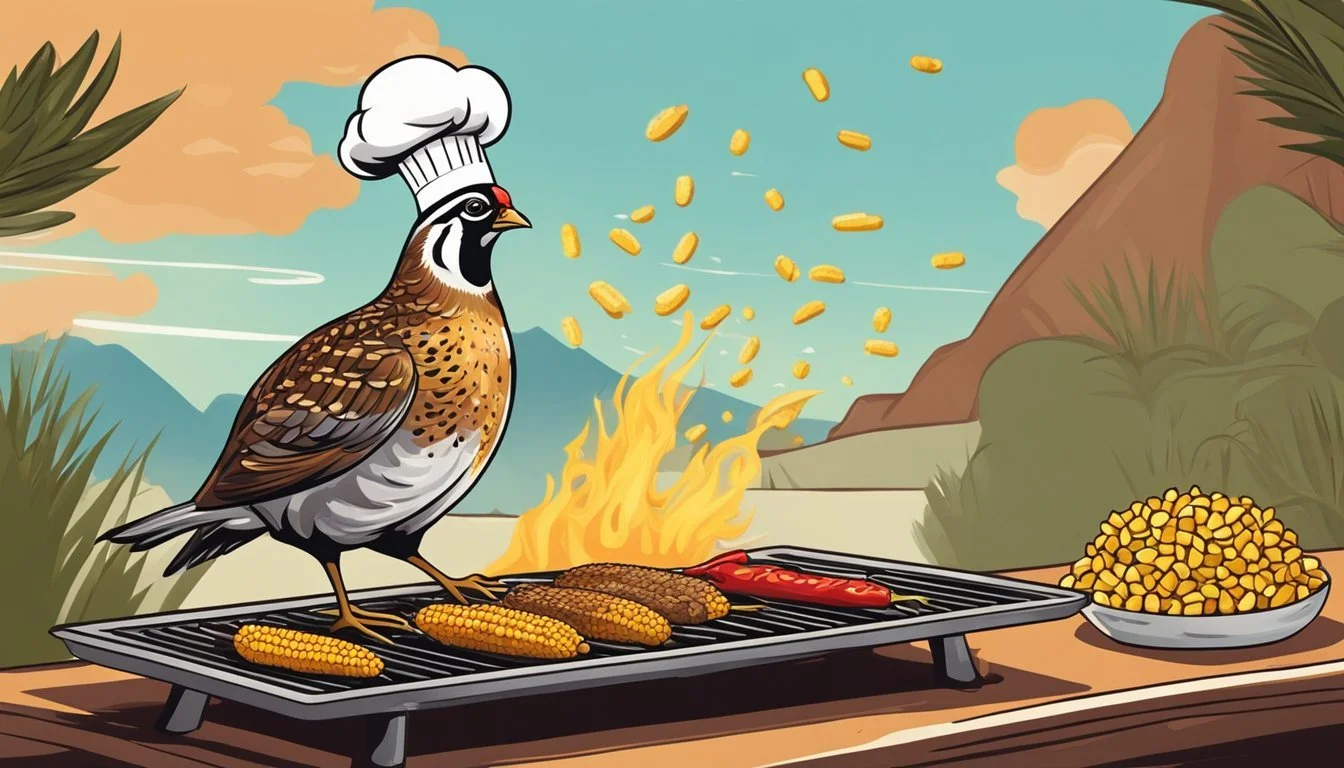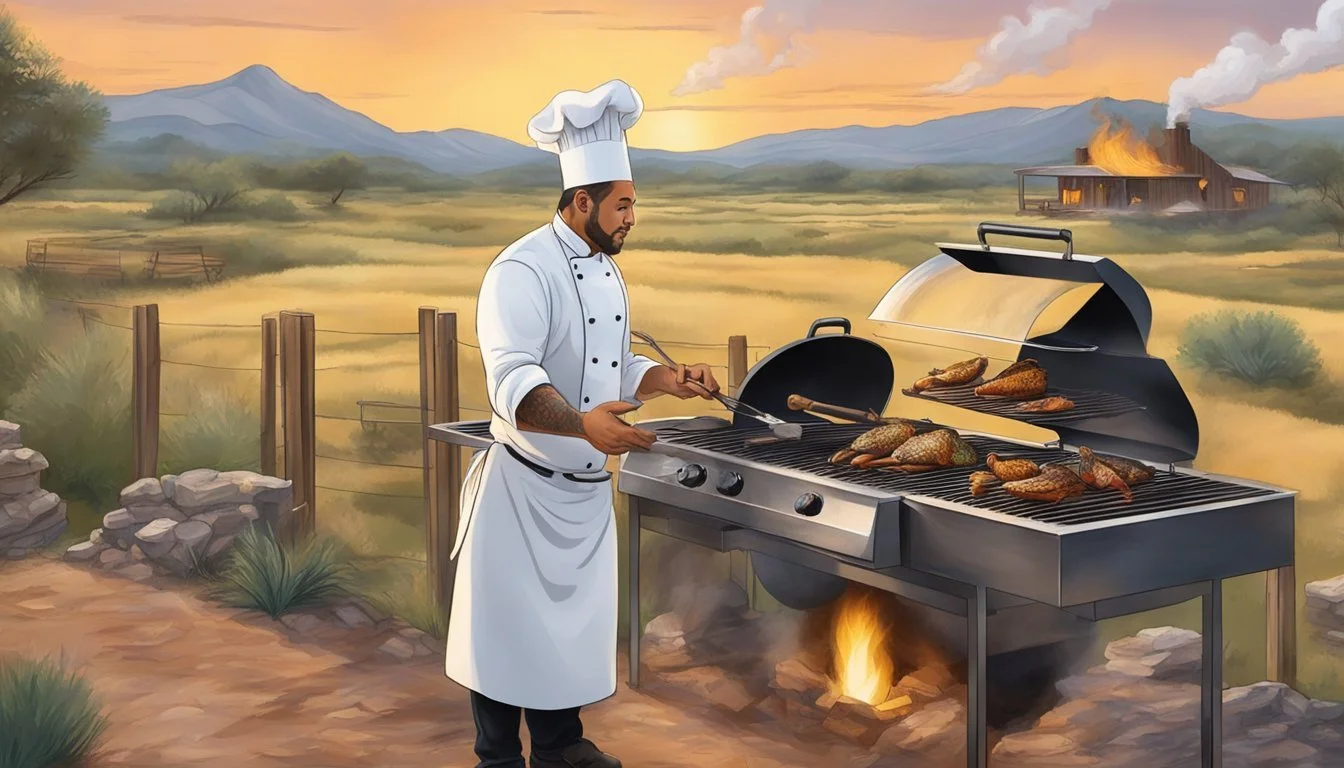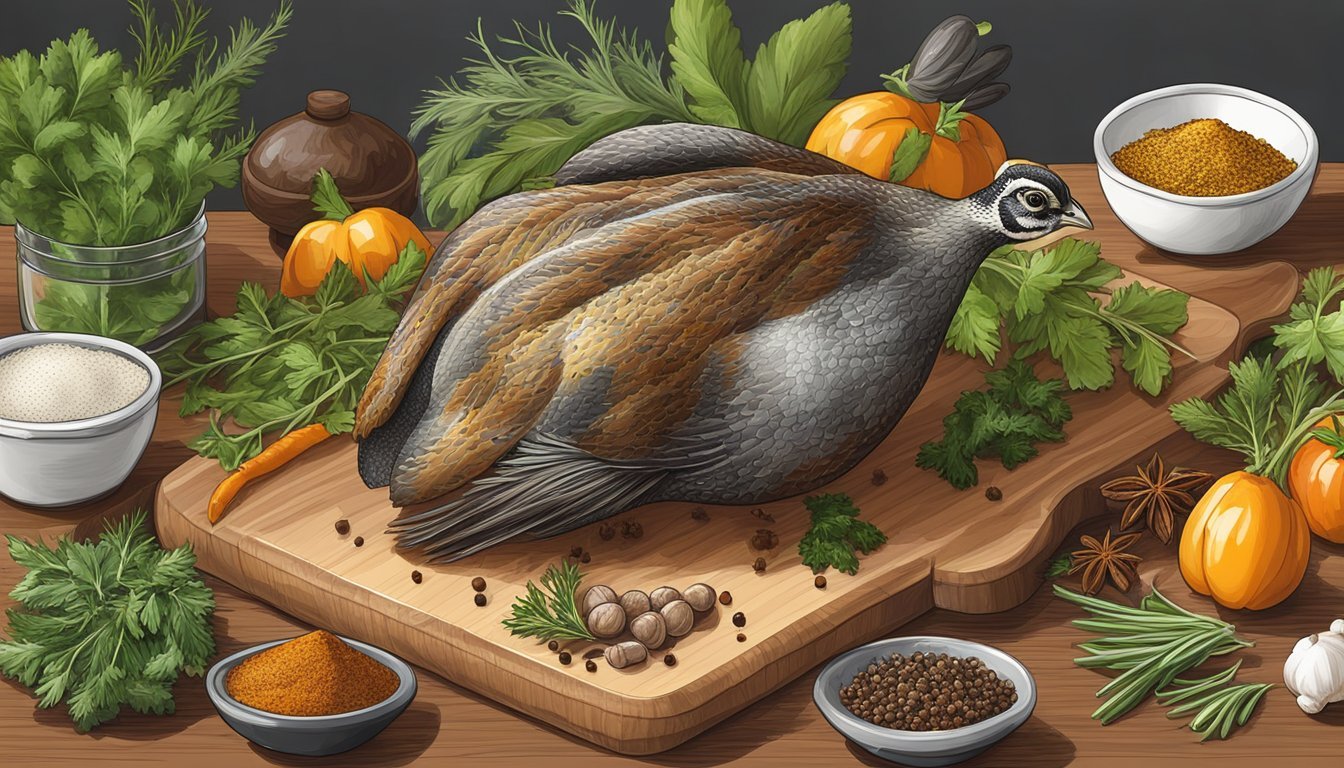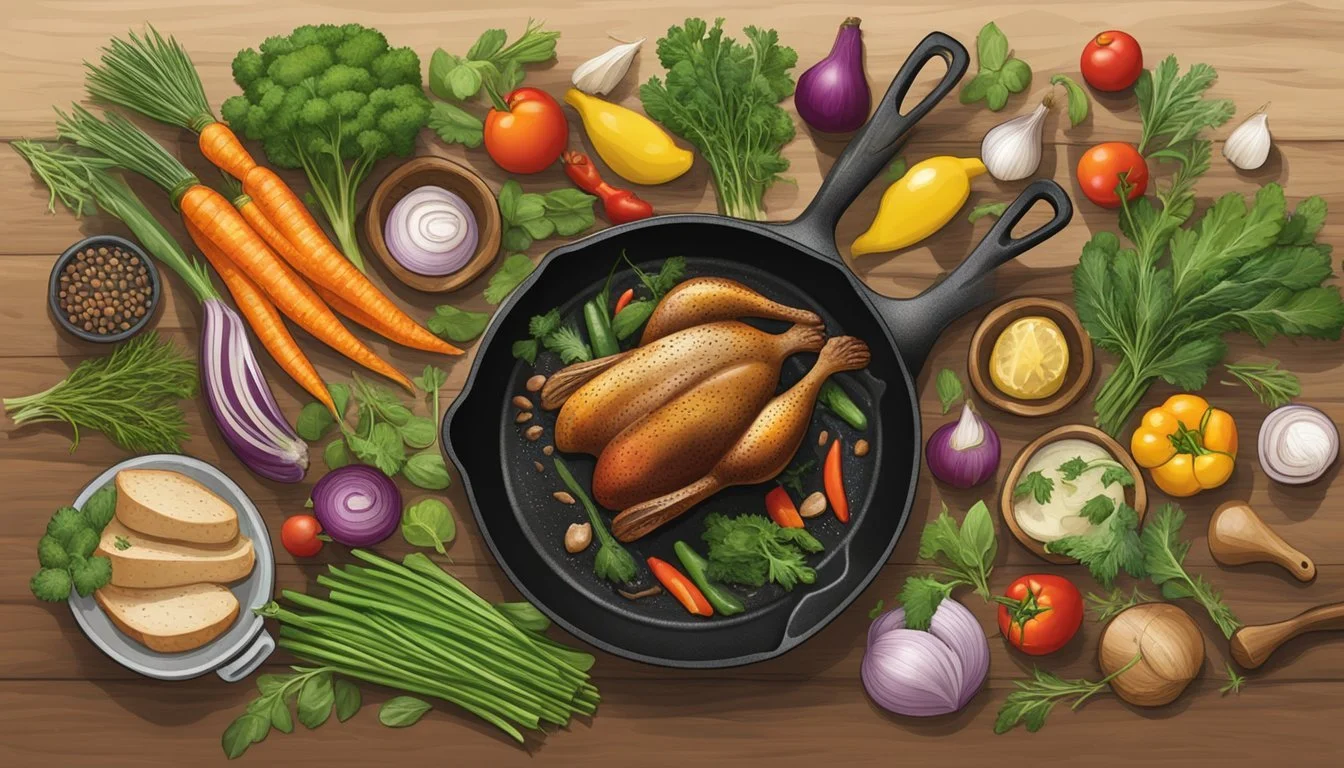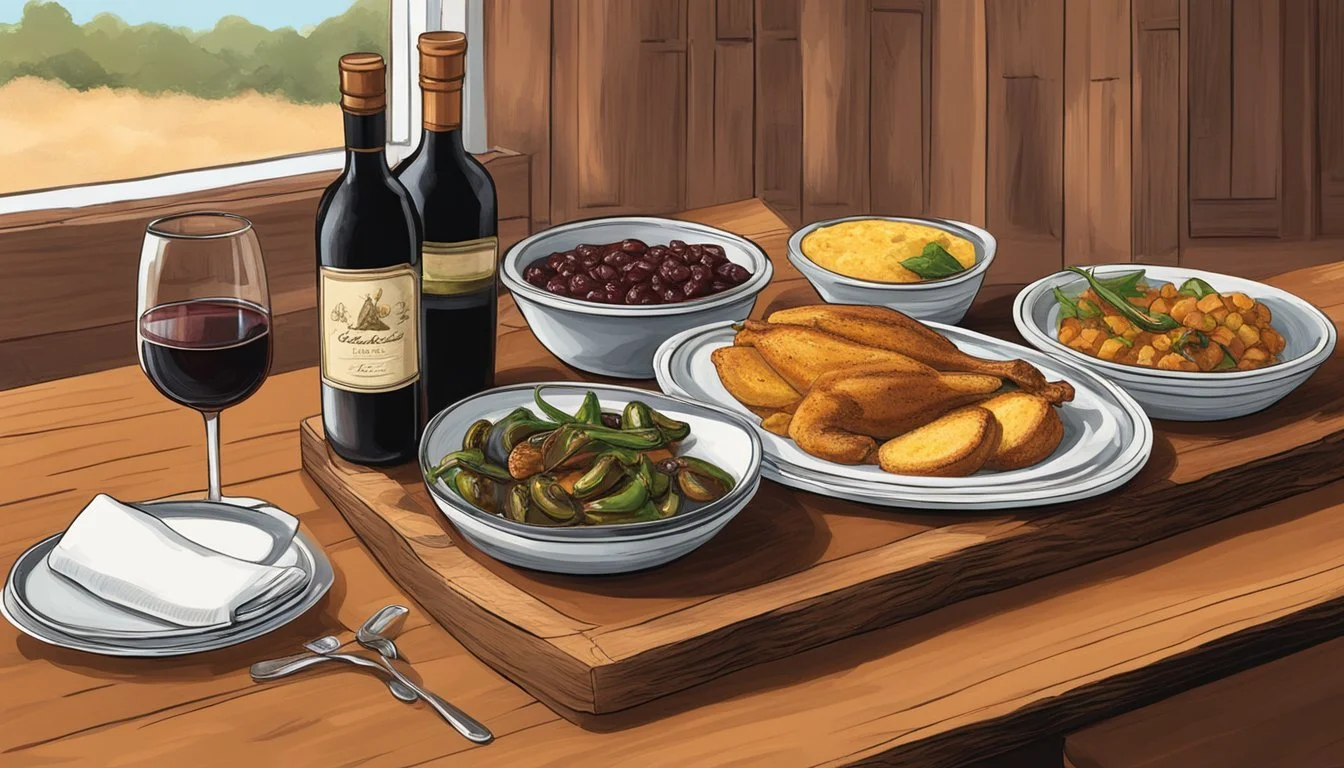How to Cook Texas-Style Quail
A Succulent Game Bird Guide
Texas-style quail (What wine goes well with quail?) is a dish that speaks to the heart of Southern cooking, bringing a blend of rustic charm and culinary finesse to the table. This particular approach to preparing quail honors the tradition of grilling, infusing the tender meat with a smoky depth that pairs beautifully with the game bird's naturally rich flavor. The process of cooking Texas quail involves meticulous seasoning and careful heat management to ensure a succulent result.
While Texas quail can be prepared in a variety of ways, grilling is a method that highlights the meat's delicate texture and allows the chef to layer flavors through marinades, spice rubs, or glazes. Quail's small size makes it a perfect candidate for high-heat cooking, creating a crispy exterior while retaining moisture inside. From sizzling on a hot grill to roasting in a blazing oven, each technique offers a different nuance to the quail, with the common aim of showcasing its distinctive taste profile.
The mark of an exemplary Texas quail recipe lies in its ability to balance the bird’s natural flavors with the bold character of chosen seasonings. Whether it's incorporating local ingredients like jalapenos for a touch of heat or wrapping the birds in bacon for added smokiness, these recipes reflect a deep appreciation for the subtleties of the regional cuisine. Cooks take pride in their craft, presenting a dish that is both steeped in tradition and tailored to contemporary palates.
Selecting Quality Quail
When one seeks top-notch quail, especially those embodying the authentic Texas spirit, certain criteria stand out. A proficient chef knows that the caliber of the meal begins with the quality of its core ingredients.
Source: To ensure the quail's quality, one might prefer locally sourced birds. Texas quail farms are reputed for raising quail in sustainable conditions that often mirror their natural habitat. Opting for these farms usually means the quail have been fed a controlled diet and have had ample space to roam, factors that affect their overall quality and taste.
Appearance: A quality quail should have firm skin, free of blemishes and bruises, with a color that appears natural and consistent. The meat should be plump and give slightly when pressed, indicating tenderness.
Freshness: Always check for freshness. A fresh quail doesn't emit a strong odor and should be stored at appropriate temperatures to ensure safety and flavor. If the option is available, purchase fresh rather than frozen quail, as it maintains the integrity of the meat's texture.
Wild vs. Farmed: Quail can be farmed or wild, and both have their merits. Wild quail are often sought after as wild foods tend to have a leaner and more distinct flavor profile. However, Texas quail farms, with their focus on quality and sustainability, produce birds with consistent taste and texture, better suited for a predictable culinary outcome.
Criteria Description Source Preference for local, sustainable Texas quail farms Appearance Firm, blemish-free skin; plump flesh Freshness No strong odors; preferably fresh over frozen Type Choice between the distinct flavor of wild quail or the consistency of farmed quail
Purchasing quail from reputable Texas quail farms not only promises a bird that is raised in an environment conscious of sustainable practices but also supports the thriving local industry dedicated to providing quality wild foods.
Preparing the Quail
To ensure succulent Texas-style quail, meticulous preparation is key. This involves cleaning, marinating, and making post-marination adjustments to infuse the bird with rich flavors.
Cleaning and Prepping
Initially, cleaning and prepping the quail is crucial. The cook should start by thoroughly rinsing the quail under cold water. Then, they must remove any remaining feathers, and if the quail is not already dressed, carefully extract the giblets and excess fat. The next step is to pat the bird dry. If desired, gently loosening the skin from the breast allows for additional seasoning beneath it, enhancing the flavor.
Marinating the Bird
Marinating the bird imparts the deep, complex tastes characteristic of Texas cuisine. A simple yet effective marinade consists of:
1/4 cup olive oil
2 cloves garlic, minced
1 teaspoon sugar
1 teaspoon salt
1/2 teaspoon black pepper
Optional: finely chopped onions or a halved jalapeno for a spicy kick
Once combined, the quail should be fully immersed in the marinade. The cook should ensure that the marinade coats the interior and exterior, which can be achieved by gently massaging it into the bird. The marinating quail should then be covered and refrigerated for at least two hours to allow flavors to meld.
Post-Marination Preparations
After marination, there are a few post-marination preparations to observe before cooking. The cook should bring the bird to room temperature, ensuring even cooking. The marinade excess should be gently shaken off, and any additional seasonings, such as more salt and pepper, can be applied at this stage. For a true Texas-style flavor boost, an optional step is inserting a jalapeno into the cavity of each bird before cooking.
Grilling Techniques
Grilling Texas-style quail requires precision and attention to heat management. The high heat needed to achieve a perfect sear must be balanced with care to avoid overcooking the delicate meat.
Setting Up Your Grill
Whether one chooses a gas grill or a charcoal grill, the initial step is preheating. For charcoal grills, this means allowing the lump charcoal to burn down to hot coals which radiate even heat. Gas grills should be set to medium-high heat. Either method aims for a grill surface hot enough to sizzle upon contact with the quail.
Grilling the Quail
It's crucial to lightly oil the grill grates before placing the quail breast side down. On a properly heated grill, the quil should cook for about 3-4 minutes undisturbed. This allows the skin to crisp and develop those characteristic grill marks without sticking to the grate.
Mastering the Flip and Turn
After the initial sear, the quail must be turned 90 degrees to create a crosshatch pattern — a hallmark of expert grilling. After 2 more minutes, flip the quail to cook the other side. Masterful flipping ensures even cooking and an attractive presentation.
Checking for Doneness
Quail cooks quickly due to its size, so check for doneness after a few minutes on the second side. The meat should feel firm to the touch, and when checked with a meat thermometer, the internal temperature should read 160°F (71°C), which indicates it's ready to rest before serving.
Additional Cooking Methods
Exploring alternative techniques is essential for any cook aiming to master Texas-style quail. Each method accentuates the bird's flavor and texture uniquely.
Roasting
When roasting quail, chefs often start breast side down to ensure that delicate meat becomes nicely browned. A typical approach involves preheating the oven to a high heat setting, such as 400 degrees Fahrenheit, then cooking the quail for around 20 to 25 minutes. This method distributes heat evenly around the bird, providing a consistent cook.
Barbecuing
For a barbecued quail with a smoky flavor, one can start with a hot fire on a grill. Cooking it uncovered over direct heat for a few minutes on each side ensures it becomes properly browned. After the initial sear, moving the quail to indirect heat lets it cook through without charring.
Searing
To sear quail, heating a heavy skillet to a high temperature is crucial. Cooks ideally add the quail breast side down, pressing gently to ensure even contact with the heat, basting periodically. Typically, after searing for 2-3 minutes, they turn it over to finish cooking on the other side. This quick cooking method helps to seal in the juices, leaving the outside crispy and the inside succulent.
Complementary Seasonings and Sauces
To elevate the distinct flavor of Texas-style quail, chefs incorporate a variety of dry rubs, marinades, and finishing sauces. These enhancements are tailored specifically to complement the gamey taste of quail meat and to pull from a palate of Texan cuisine staples including smoke, spice, and sweetness.
Dry Rubs
Dry rubs form a crust on the quail, sealing in flavors and juices during cooking. A common dry rub for Texas-style quail includes combinations of:
Salt and Black Pepper: The foundation of flavor for any dry rub.
Chili Powder and Cumin: Providing earthy and smoky notes.
Garlic Powder and Onion Powder: For aromatic qualities.
Paprika: Offers a subtle sweetness along with its vibrant color.
Cayenne: Adds a kick of heat, adjusted to taste.
Mix these ingredients in equal parts or adjust based on preference to create a signature rub.
Wet Marinations
Wet marinades utilize a blend of liquids and spices to tenderize and infuse the quail with flavor. Essential ingredients for a Texas-style marinade might include:
Olive Oil: Acts as a base for the marinade and helps keep the quail moist.
Lemon Juice: The acidity tenderizes the meat.
Honey or Peach Jam: Introduces a touch of sweetness which caramelizes nicely on the grill.
Fresh Herbs like Cilantro and Thyme: Contribute refreshing and woodsy profiles respectively.
Marinate the quail for several hours or overnight in the refrigerator for optimal infusion.
Finishing Sauces
A finishing sauce is applied to the quail towards the end of cooking or after it’s served. Popular choices include:
Butter Sauce: Simple melted butter with added spices can be brushed on just before the quail finishes grilling.
Hot Sauce: To embrace the Texas heat, a dollop of hot sauce can add a lively zest.
Fresh Herb Dips: Chopped herbs blended into a creamy base serve as a rich complement to the quail’s robust flavor.
From dry rubs that introduce a complex layer of spices, to marinades that tenderize and sauces that amplify the final taste, these accompaniments are integral for crafting an authentic Texas-style quail dish.
Finishing Touches and Presentation
Once the Texas-style quail is properly cooked, the key to maximizing flavor and presentation lies in allowing the meat to rest, adding thoughtful garnishes, and serving it with complementary sides.
Resting the Meat
Allowing the quail to rest after cooking is crucial for a juicier result. The meat should sit for at least 5-10 minutes before carving or serving. This period allows the juices to redistribute, ensuring that every bite is succulent and moist.
Garnishing
A visually appealing garnish can enhance the presentation and add subtle flavor nuances. Sprinkling a bit of fresh or dried thyme or sage over the quail gives a nod to classic Texas aromatics. One can also consider adding a drizzle of a reduction sauce made from the pan juices for an extra layer of taste.
Serving Suggestions
To present Texas-style quail, place it at the center of a warm plate. Accompany the bird with a side of wild rice or a dressing featuring local ingredients for an authentic touch. The presentation should be simple yet inviting, allowing the quail to be the star of the dish.
Nutritional Considerations
When cooking Texas-style quail, one must consider the nutritional value of the dish. Despite its small size, quail meat is a robust source of protein, essential for muscle repair and growth. It is also low in saturated fat, making it a leaner poultry option. However, certain aspects like the addition of sauces or wrapping in bacon can add to the total fat and saturated fat content.
Typical Nutritional Values per 100g of Quail Meat:
Calories: 123 kcal
Protein: 24 g
Total Fat: 2.6 g
Saturated Fat: 0.7 g
Cholesterol: 68 mg
Sodium: 58 mg
Carbohydrates: 0 g
Dietary Fiber: 0 g
The cholesterol content is relatively high, which could be a point of consideration for individuals managing their cholesterol intake. Quail is naturally low in sodium, a positive aspect for those watching their salt consumption. It contains neither carbohydrates nor dietary fiber, as it is purely a source of animal protein.
For a more detailed nutritional analysis, one can adjust the recipe to either enhance or reduce certain nutritional components. For instance, opting to omit bacon or high-sugar sauces can decrease fat and calorie counts while maintaining the high protein quotient, making it a suitable option within protein-rich diets. It should be noted that the above values can vary based on cooking methods and additional ingredients used in the preparation of Texas-style quail.
Pairings and Accompaniments
When one prepares Texas-style quail, the choice of pairings and accompaniments can enhance both the flavor and presentation of the dish. A thoughtful selection of sides not only complements the taste but also ensures a balanced meal. Here are some suitable options:
Wild Rice: Wild rice, with its nutty flavor and hearty texture, is an excellent accompaniment to game birds like quail. It can be prepared as a pilaf with fresh herbs, adding both color and an aromatic touch to the dish.
Vegetables: Roasted or grilled vegetables such as peas, onions, or mixed seasonal vegetables provide a nutritious and flavorful contrast to the rich taste of quail. They can be lightly seasoned to allow the natural flavors to shine through.
Salads: A crisp salad with a citrus dressing can offer a refreshing counterpoint to the savory quail. Ingredients such as arugula, oranges, or pomegranate seeds add a lively burst of flavor and texture.
Recommended Pairings
Side Dish Preparation Serving Suggestion Wild Rice Pilaf Herb-infused, simmered Plate alongside or underneath quail Roasted Vegetables Oven-roasted with spices Serve as a separate side Citrus Salad Freshly tossed Present as a starter or side
In determining the yield, it depends on the number of servings one aims to provide. For individual servings, one might prepare a half-cup of wild rice and a portion of vegetables or salad per person. When serving quail at a dinner party, generous communal dishes of each side on the table can encourage guests to help themselves according to their preference, enhancing the dining experience with a touch of Southern hospitality.
Safety and Hunting Protocols
Quail hunting, particularly for the scaled quail in Texas, requires adherence to strict safety protocols and game laws to ensure a responsible and ethical hunt.
Safety Measures
Wear Blaze Orange: Hunters should wear blaze orange vests and hats for visibility to other hunters.
Firearm Handling: Always keep the muzzle pointed in a safe direction, finger off the trigger until ready to shoot, and firearms unloaded when not in use.
Hunting Strategy
Communication: Maintain clear communication with hunting companions to know each other's positions.
Stable Shooting Stance: Ensure a stable stance before shooting to prevent accidents and ensure a humane harvest.
Game Laws
Licenses: Hunters must possess a current hunting license, with an upland game bird endorsement for quail hunting.
Bag Limits: Adhere to daily bag and possession limits as defined by Texas Parks & Wildlife.
Hunting Seasons: Only hunt during the prescribed seasons for scaled quail to protect populations.
Ethical Protocols
Respect Wildlife: Pursue quail in a manner that minimizes stress to the birds and their habitat.
Fair Chase: Engage in fair chase practices, avoiding any unsporting methods.
It is imperative for hunters to familiarize themselves with the specific regulations published annually by the Texas Parks & Wildlife Department. Responsible hunters contribute to the conservation of both the species and their habitats, ensuring that quail hunting can be enjoyed for generations to come.
Sustainability and Local Sourcing
When cooking Texas-style quail, chefs and home cooks alike are turning to sustainable and local sourcing practices. Texas quail farms are at the forefront of providing high-quality, ethically sourced quail. These farms often embrace farm-to-table principles, ensuring transparency in the supply chain and offering consumers the ability to trace the origin of their food.
Local sourcing supports the local economy and reduces environmental impact by minimizing transportation distances. The farm-to-table movement fosters a direct connection between consumers and local producers, emphasizing the importance of sustainability in agriculture. Texas quail farms dedicated to sustainable practices help preserve the environment and promote animal welfare by implementing ethical farming techniques.
Consumers interested in sustainability can look for:
Texas Quail Farms: known for diverse agricultural outputs and commitment to ethical farming.
Farm-to-Table Restaurants: that source their quail directly from these local farms.
By choosing quail from local and sustainable sources, consumers can enjoy a meal that is not only savory but also contributes positively to the environment and the local community.
Key Aspect Description Local Economy Enhanced by supporting Texas quail farms and restaurants Sustainability Fostered through responsible farming practices Ethical Sourcing Ensured by transparency and traceability of quail origin
In conclusion, the locavore movement and ethical sourcing are defining features of the Texas culinary scene, and Texas-style quail serves as a delectable example of these principles in action.

